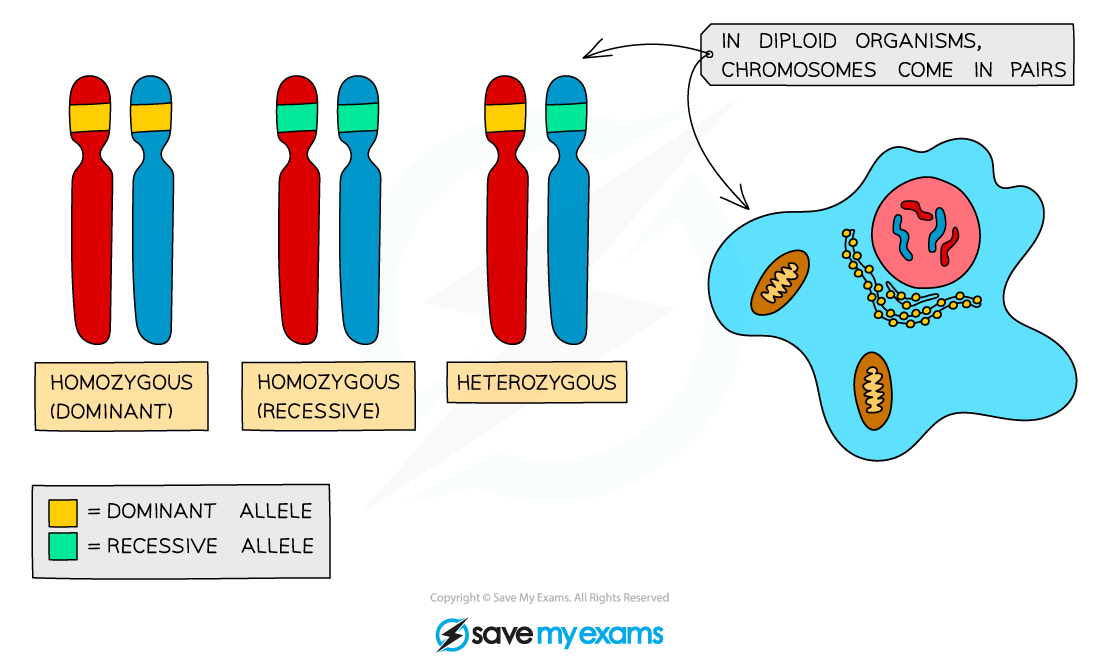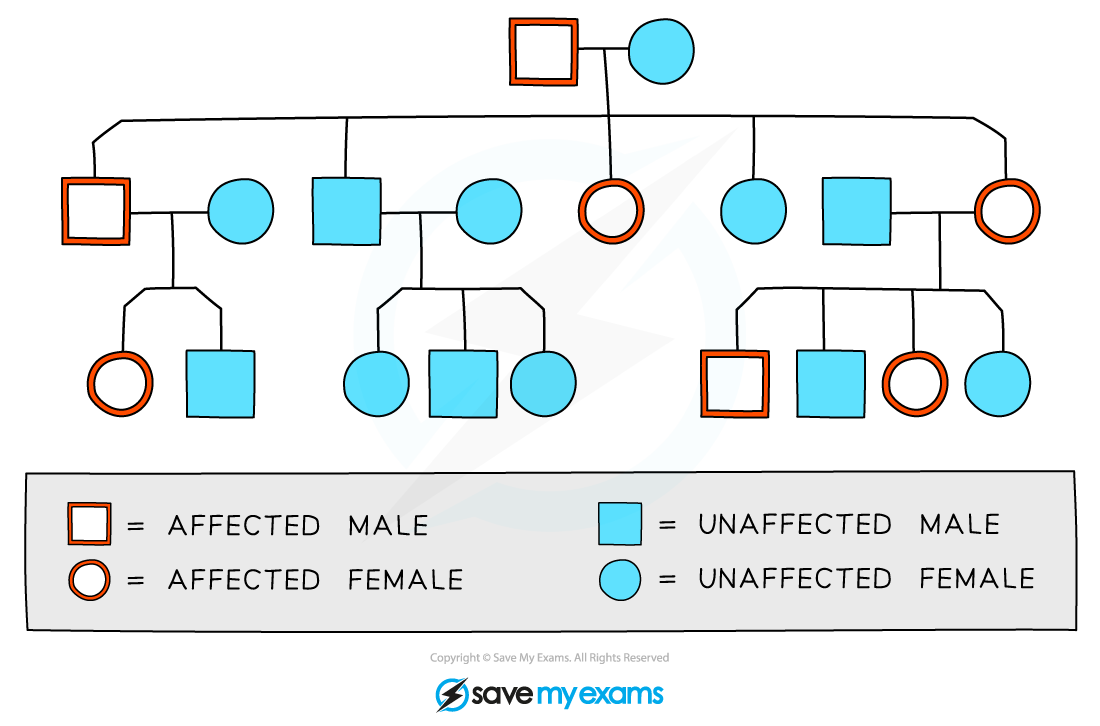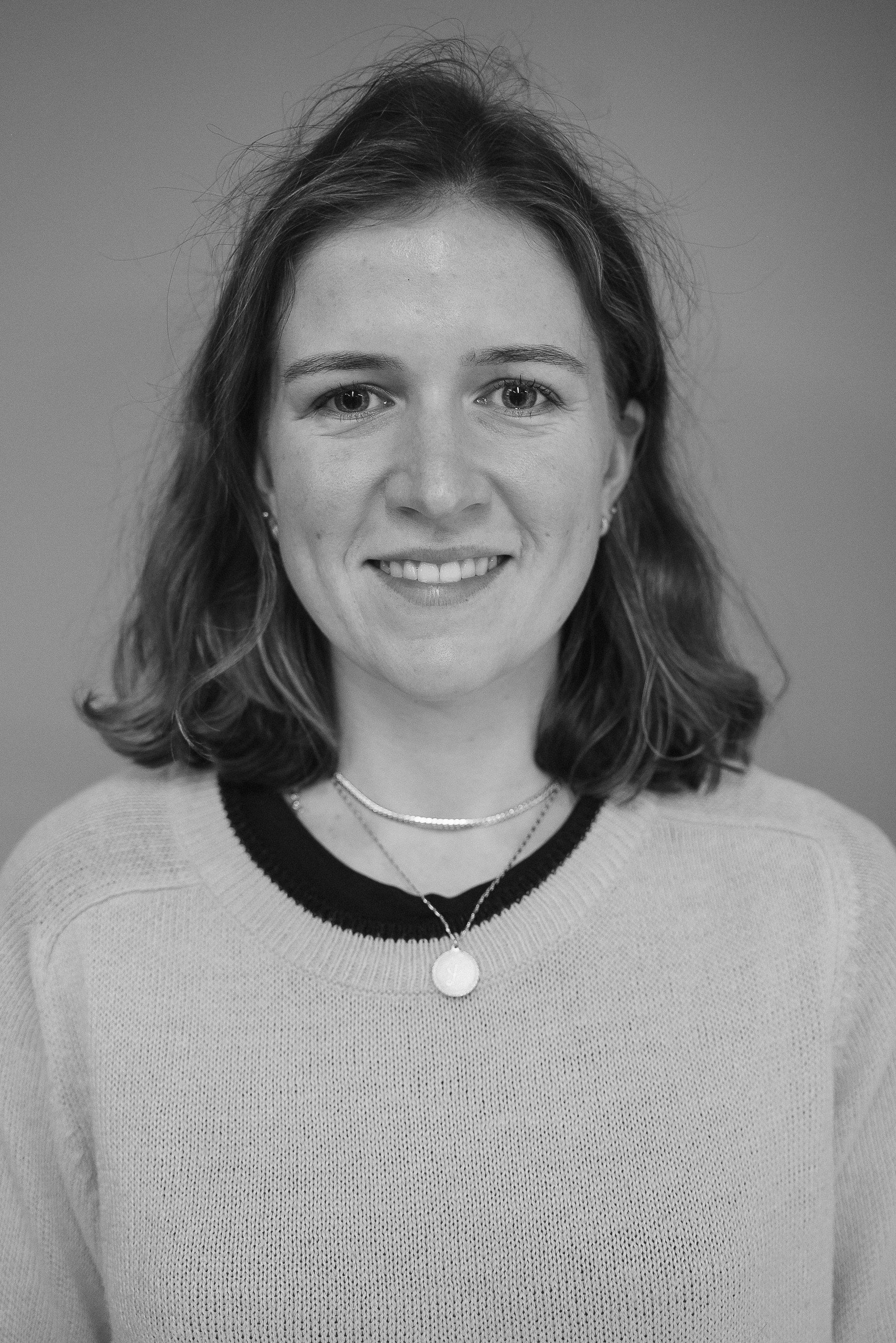Monohybrid Inheritance (Cambridge (CIE) IGCSE Biology) : Revision Note
Learn the monohybrid inheritance definition for your IGCSE exam. This revision note covers inheritance key terms, drawing punnett squares & monohybrid crosses.
Did this video help you?
Inheritance: definitions
Inheritance is the transmission of genetic information from one generation to the next generation
A gene is a short length of DNA found on a chromosome that codes for a particular characteristic
Alleles are versions, or forms, of a gene
Chromosomes exist in matching pairs, so individuals have two copies of each gene and therefore two alleles of each gene
One of the alleles is inherited from the mother and the other from the father
For example, an individual has two copies of the gene for eye colour; these alleles could be identical, or they could be different
The observable characteristics of an organism is called the phenotype
The combination of alleles that control each characteristic is called the genotype
Alleles can be dominant or recessive
A dominant allele only needs to be inherited from one parent in order for the characteristic to show up in the phenotype
A recessive allele needs to be inherited from both parents in order for the characteristic to show up in the phenotype.
If there is only one recessive allele, it will remain hidden and the dominant characteristic will show
If the two alleles of a gene are the same, we describe the individual as being homozygous (homo = same); an individual could be:
homozygous dominant: having two copies of the dominant allele, or
homozygous recessive: having two copies of the recessive allele
If the two alleles of a gene are different we describe the individual as being heterozygous (hetero = different)
When completing genetic diagrams alleles are notated as single letters
The dominant allele is given a capital letter and the recessive allele is given the lower case version of the same letter

Alleles of a gene can carry the same instructions or different instructions. You can only inherit two alleles for each gene, and they can be the same or different
We cannot always determine the genotype of an individual just by looking at the phenotype
A phenotype associated with a dominant allele will be seen in both a dominant homozygous and a heterozygous genotype
If two individuals who are both identically homozygous for a particular characteristic are bred together, they will produce offspring with exactly the same genotype and phenotype as the parents
We describe them as pure breeding as they will always produce offspring with the same characteristics
A heterozygous individual can pass on different alleles for the same characteristic each time it breeds with any other individual and can therefore produce offspring with a different genotype and phenotype than the parents
heterozygous individuals are not pure breeding
Genetic diagrams
What is monohybrid inheritance?
Monohybrid inheritance is the inheritance of characteristics controlled by a single gene (mono = one)
This can be determined using a genetic diagram known as a Punnett square
A Punnett square diagram shows the possible combinations of alleles that could be produced in the offspring
From this the ratio of these combinations can be worked out
Worked Example
The height of pea plants is controlled by a single gene that has two alleles: tall and short
The tall allele is dominant and is shown as T
The small allele is recessive and is shown as t
Show the possible allele combinations of the offspring produced when a homozygous short plant is bred with a homozygous tall plant. Determine the probability that any offspring will be tall
Step 1: construct a Punnett square
The parents are homozygous, so:
tall = TT
short = tt
The Punnet square should indicate:
parent gametes
offspring genotypes
an indication of which offspring are tall
Step 2: determine the probability of tall offspring
All offspring are Tt
The probability that they are tall = 100 %

Show the possible allele combinations of the offspring produced when two of the offspring from the first cross are bred together. Determine the probability that any offspring will be short.
Step 1: construct a Punnett square
The offspring from the first cross are all Tt
The Punnet square should indicate:
parent gametes
offspring genotypes
an indication of which offspring are short
Step 2: determine the probability of short offspring
Offspring genotypes = TT, Tt, Tt, tt
Offspring phenotypes = 3 x tall, 1 x short
The probability that they are tall = 25 %

Worked Example
The height of pea plants is controlled by a single gene that has two alleles: tall and short
The tall allele is dominant and is shown as T
The small allele is recessive and is shown as t
Show the results of crossing a heterozygous plant with a short plant. Determine the probability of the offspring being short.
Step 1: construct a Punnett square
The heterozygous parent has the genotype Tt
The short parent has the genotype tt
The Punnet square should indicate:
parent gametes
offspring genotypes
an indication of which offspring are short
Step 2: determine the probability of short offspring
Offspring genotypes = Tt, Tt, tt, tt
Offspring phenotypes = 2 x tall, 2 x short
The probability that they are tall = 50 %

Constructing Punnett squares
You may be asked to determine the ratio of different allele combinations in the offspring, calculate a percentage chances of offspring showing a specific characteristic or just determine the phenotypes of the offspring; this can be done using a Punnett square as follows:
Determine the letter that will be used to notate each allele
Some exam Qs will provide this information
If not then you should select a relevant letter, e.g. E and e for eye colour
Determine the parental genotypes
Determine the gametes produced by each parent and add them to the Punnett square headings
Fill in the middle four squares of the Punnett square to work out the possible genetic combinations in the offspring
Indicate clearly on your Punnett square which individual will show each phenotype, e.g. with labels or colour coding
Examiner Tips and Tricks
If you are asked to use your own letters to represent the alleles in a Punnett square, try to choose a letter that is obviously different as a capital than the lower case so the examiner is not left in any doubt as to which is dominant and which is recessive.
For example, C and c are not very different from each other when written by hand, whereas A and a are!
Pedigree diagrams
Family pedigree diagrams are usually used to trace the pattern of inheritance of a specific characteristic (usually a disease) through generations of a family
This can be used to work out the probability that someone in the family will inherit the genetic disorder

A family pedigree chart
Males are indicated by the square shape and females are represented by circles
Affected individuals are red and unaffected are blue
Horizontal lines between males and females show that they have produced children (which are shown underneath each couple)
The family pedigree above shows:
both males and females are affected
every generation has affected individuals
That there is one family group that has no affected parents or children
the other two families have one affected parent and affected children as well
Identifying an unknown genotype: extended
Breeders can use a test cross to find out the genotype of an organism showing the dominant phenotype
This involves crossing the unknown individual with an individual showing the recessive phenotype - if the individual is showing the recessive phenotype, then its genotype must be homozygous recessive
By looking at the ratio of phenotypes in the offspring, we can tell whether the unknown individual is homozygous dominant or heterozygous
Worked Example
The height of pea plants is controlled by a single gene that has two alleles: tall and short
The tall allele is dominant and is shown as T
The small allele is recessive and is shown as t
A plant breeder has a tall plant of unknown genotype. Show how they can find out whether it is homozygous dominant or heterozygous.
Step 1: construct Punnett squares
The short plant is showing the recessive phenotype and so must be homozygous recessive tt
The tall parent could be either TT or Tt, so we will need to produce two Punnett squares to show the different outcomes
The Punnet squares should indicate:
parent gametes
offspring genotypes
which offspring are tall or short
Step 2: determine how the outcomes of the two crosses would differ
Homozygous tall parent offspring = Tt = all tall
Heterozygous tall parent offspring genotypes = Tt or tt = 50 % tall and 50 % short
The presence of any short offspring indicate that the unknown parent has a heterozygous genotype


You've read 0 of your 5 free revision notes this week
Unlock more, it's free!
Did this page help you?

